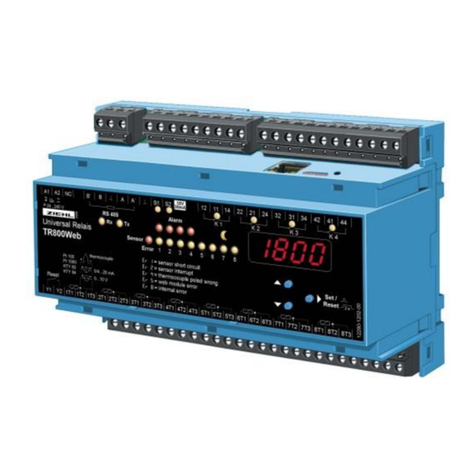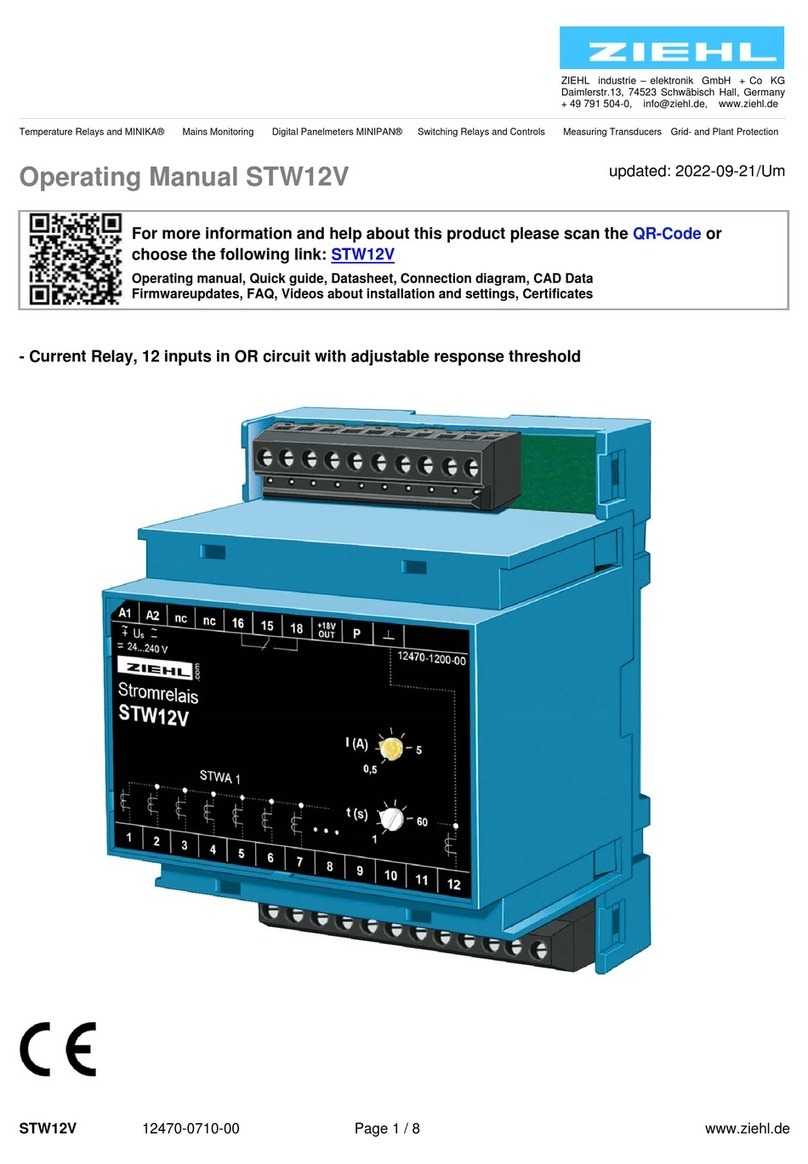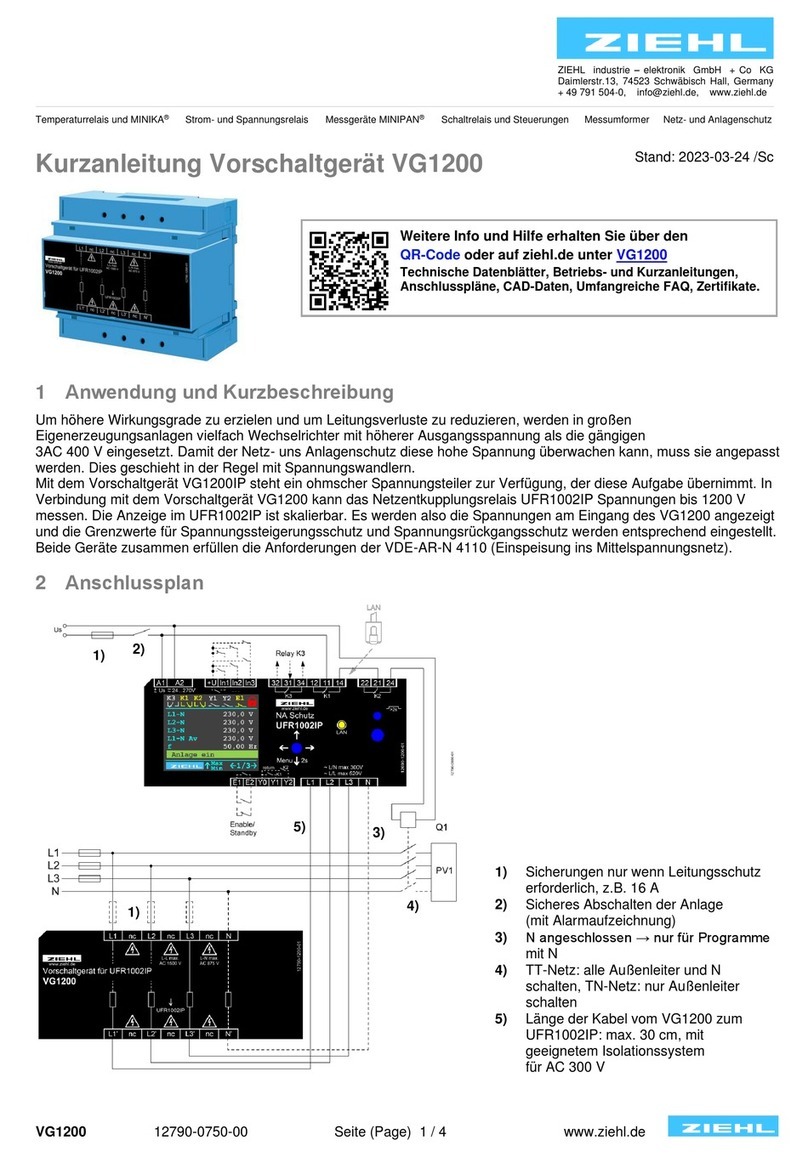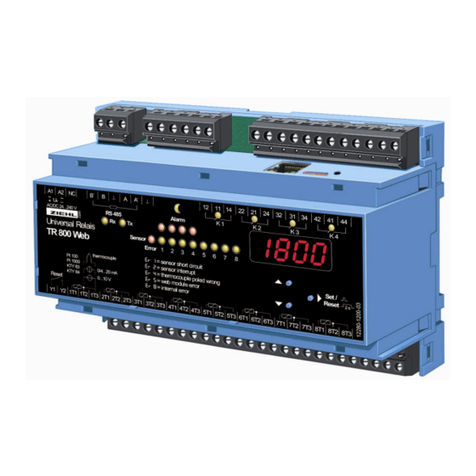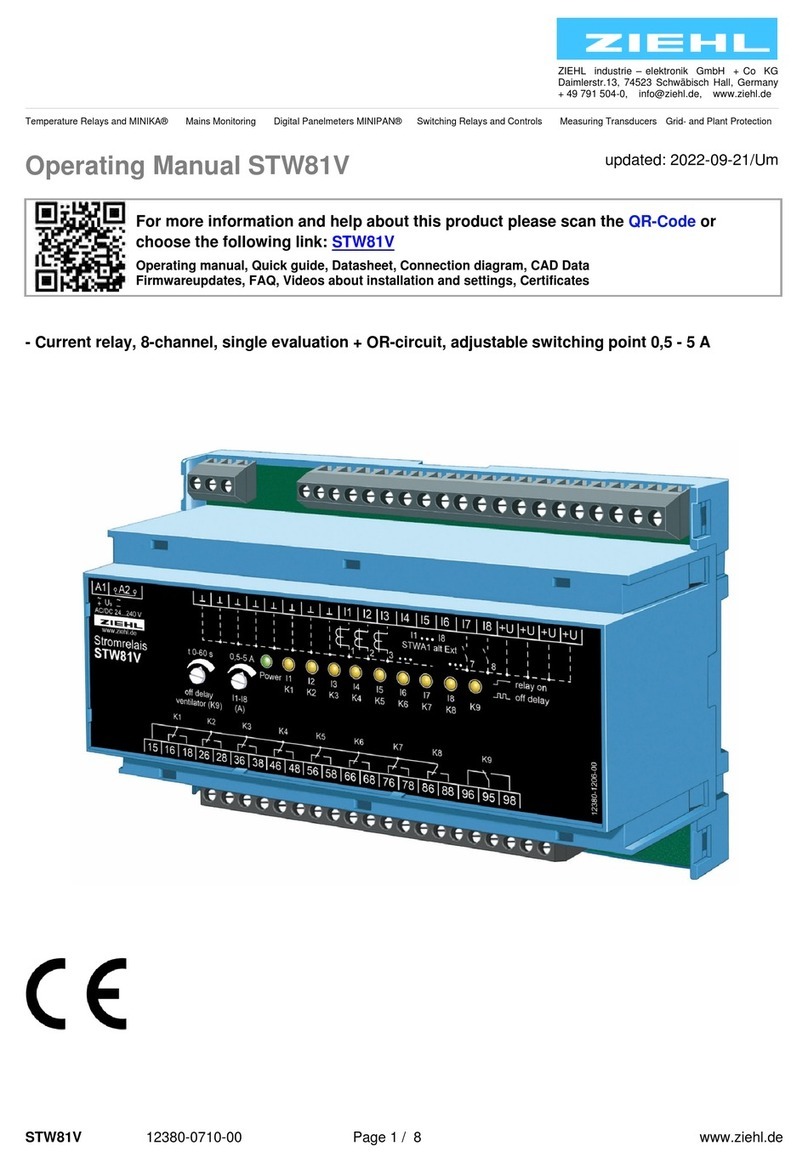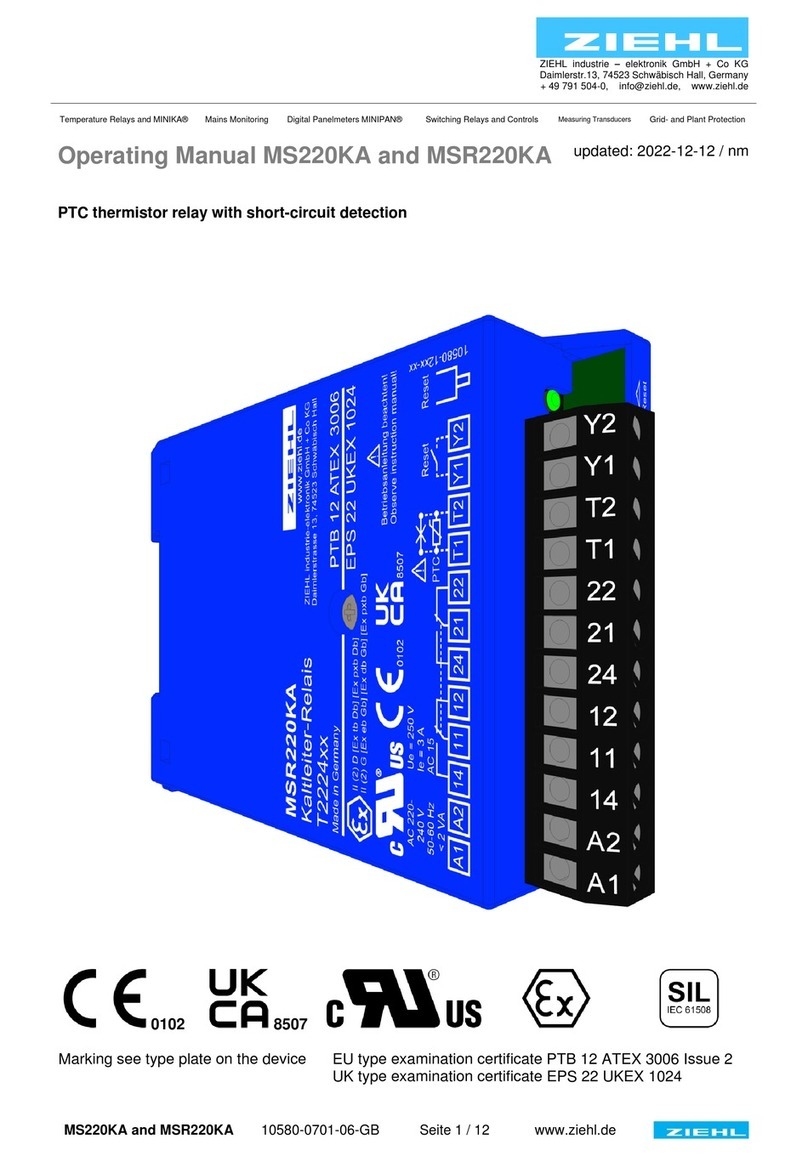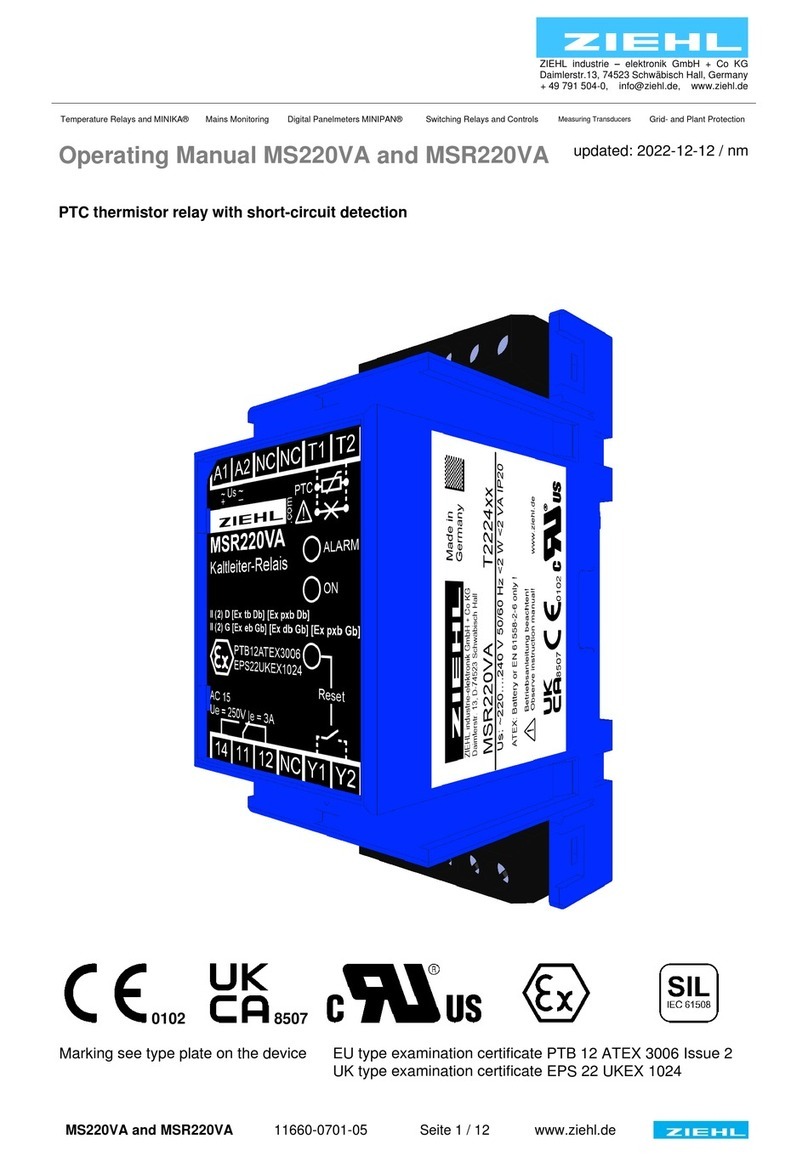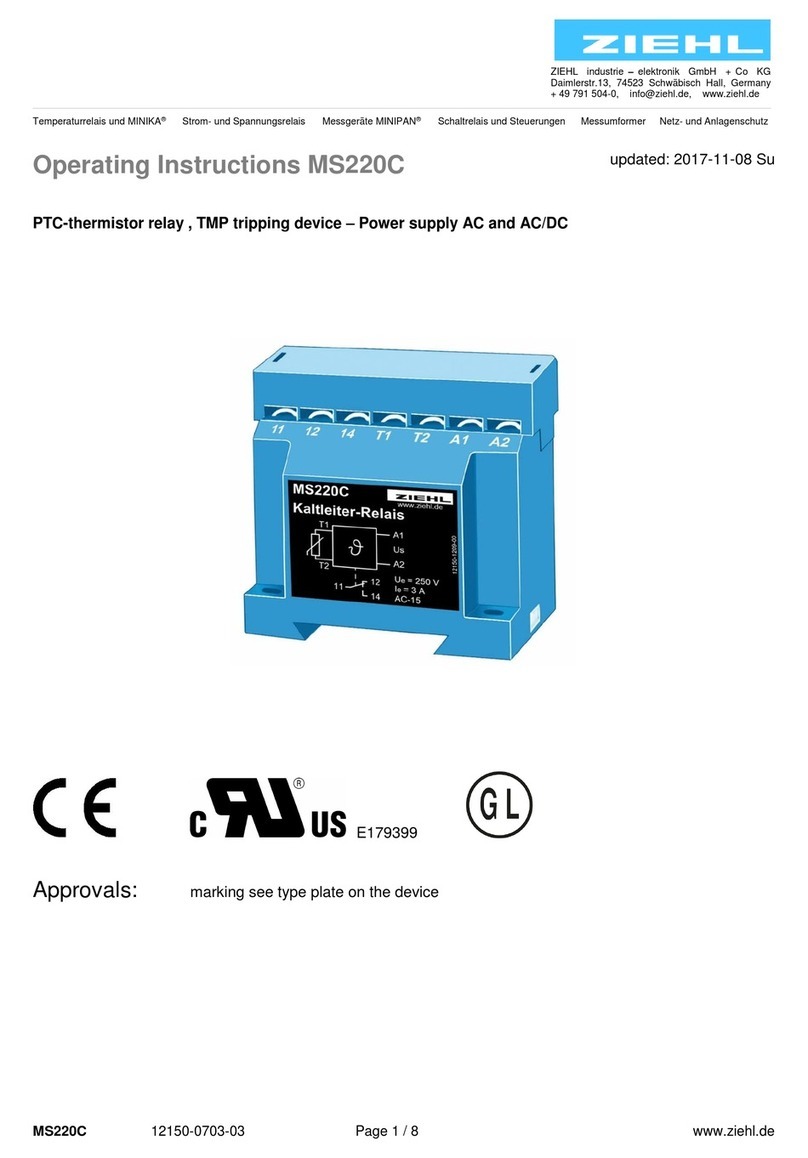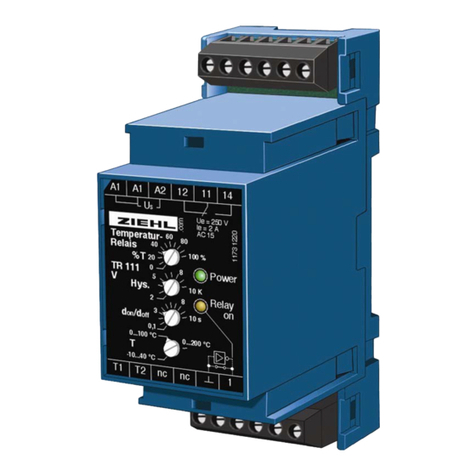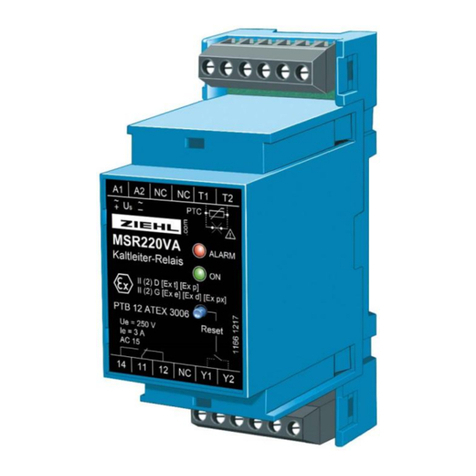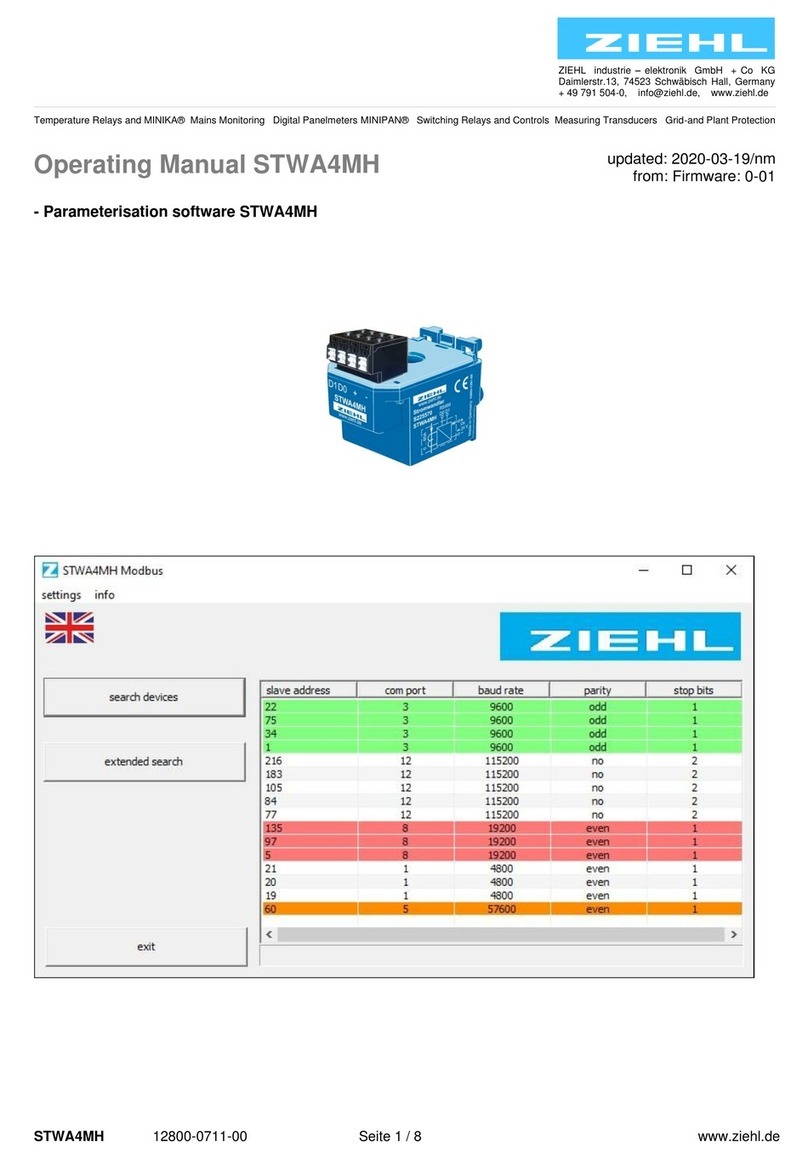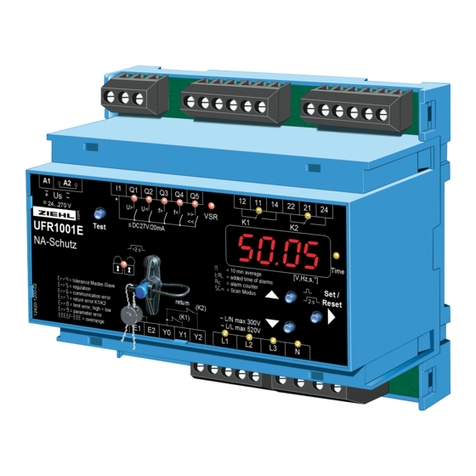/ 24 www.ziehl.de
3 Application and brief description
The SPI1021 monitors voltage and frequency in plants for own generation of electricity. It fulfills the
requirements of CEI 0-21 + DEWA.
6 selectable programs allow measuring, 3 phases to neutral (4-wire mode), 3 phases phase-phase (3-wire
mode) and single phase to neutral (2-wire).
The SPI1021 can monitor all decentralized power plants, photovoltaic, wind or thermal, that feed in the low or
medium voltage grid. In applications with possible asymmetry >6kVA, power balance has to be monitored
extra.
All limits are preset according to CEI 0-21(Pr1-3) or DEWA (Pr4-6). They can be changed if required and be
protected with a code and/or a seal.
A counter for alarms and standbys stores the last 100 events with reason and elapsed time. In addition the
time the SPI1021 has interrupted the plant is recorded. All values can be read displayed at the device and
give the operator valuable information about the availability of the plant.
The standby input allows a remote shutoff e.g. with a RCR. It can also be used to switch to an energy saving
mode by a timer or a twilight switch. Number of standbys and added time are stored and can be read in the
display.
4 Summary of the functions
When the device has been installed, a self-test starts automatically. The self-test can be repeated when
required. All values of the test are stored and can be read out at the display.
•Monitoring of under- and overvoltage 0/15-520 V
•Measuring of 3 phases with or without neutral or single phase
•Monitoring of over- and underfrequency 45-65 Hz (voltage dependent, adjustable)
•Monitoring of quality of voltage (10-minutes-average)
•Monitoring of vector-shift (connectible) and rocof (rate of change of frequency)
•Input IN2 for selection of frequency window
•Input In3 for selection of mode transitory or definitive
•Input Y0/Y1 for monitoring function of connected switch (automatic detection of nc/no)
•Relay K2 picks up (on time <500ms) only at failure at switch connected to K1, only with manual reset
•2 restarts at switch-on error of connected switch
•Self-test with storing of values
•Switching delays adjustable 0,05…130 s
•Switching-back-delays adjustable 0…999 s
•Different switching time according to type of alarm and selected mode
•Switch-on delay 300 s
•All parameters preset according to CEI 0-21
•Alarm counter for 100 alarms with value, reason and elapsed time
•Recording of added time of alarms
•Input for standby (off time <50ms) with counter and recording of time
•Simulation for testing
•Sealing, all parameters can be read out while sealed
•Easy installation and programming with 6 preset programs
•Supply-voltage AC/DC 24-270 V
•Housing for DIN-rail-mount, 105 mm wide, mounting height 70 mm

